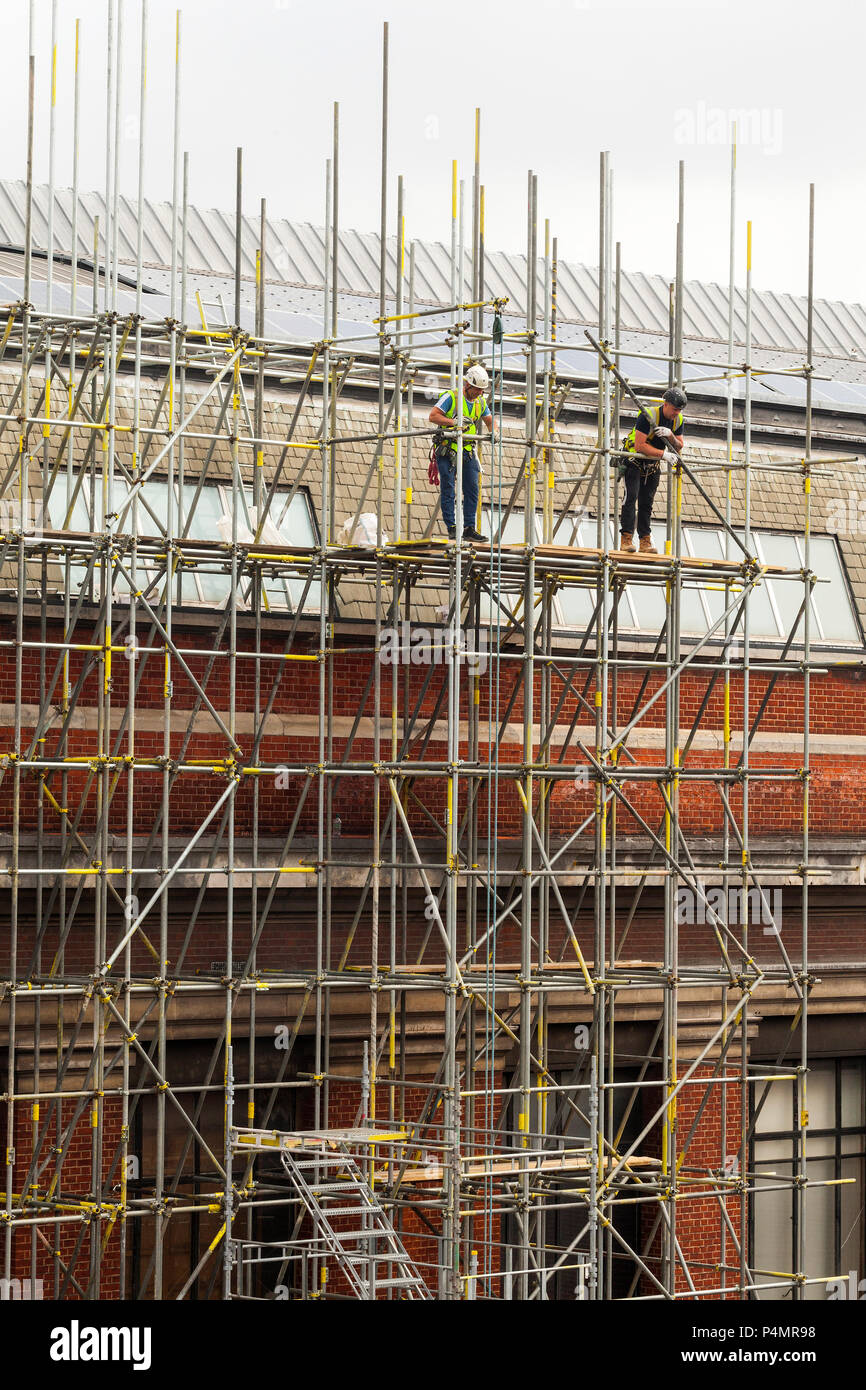In the vibrant world of building, security and effectiveness are paramount. Scaffolding Contractors In Margate play a critical role in guaranteeing that construction sites work smoothly and securely. These experts not only provide the necessary support structures to elevate workers and supplies but also bring a abundance of knowledge in safety measures, project oversight, and innovative scaffolding methods. As construction tasks grow more intricate, the need for skilled scaffolding contractors becomes ever more vital.
Whether embarking on a small residential upgrade or a large-scale commercial endeavor, comprehending the range of what a scaffolding contractor does is important for homeowners and project managers alike. This article will explore the responsibilities of scaffolding contractors, the significance of safety in scaffolding construction, and the numerous reasons to hire qualified professionals. With a thorough overview of multiple scaffolding styles and their functions, readers will gain insights into choosing the right contractors, ensuring compliance, and encouraging a safe working environment on construction sites.
Comprehending Scaffolding Providers
Scaffold providers play a crucial part in the building industry, providing temporary frameworks that support work at heights. They are responsible for the planning, setup, and dismantling of scaffold structures, ensuring that these systems meet safety standards and protocols. By focusing in this area, they help construction teams access elevated work surfaces safely and effectively, making them an indispensable ally in any building job.
The tasks of scaffolding providers extends beyond just construction; it involves meticulous planning and coordination with project managers, contractors, and engineers. They assess the particular needs of a project and select the right type of scaffolding tailored for the task at hand. This includes understanding the load requirements, the height involved, and the environment where the scaffolding will be used. Their expertise ensures that the scaffolding is not only functional but also safe for all employees involved.
With safety as a main focus, scaffold contractors implement rigorous safety checks and follow industry standards to minimize hazards. They ensure that all materials and equipment used are in accordance with regulations, further lowering the potential for incidents on site. By maintaining a focus on safety and effectiveness, scaffolding providers significantly add to the overall effectiveness and efficiency of construction projects.

Safety and Compliance in Scaffolding
Safety is paramount in the engineering industry, and scaffold systems plays a major role in ensuring that employees can carry out their jobs without exposure to unnecessary hazards. Scaffolding contractors are trained to adhere to strict safety standards and guidelines, which involve ongoing evaluations, correct construction, and maintenance of scaffold systems. By putting into practice safety guidelines, these contractors help reduce incidents and harm on-site, guaranteeing that all personnel can work in a secure environment.
Compliance with safety regulations is not only necessary for the health of employees but also for the effective finalization of building efforts. Scaffolding contractors must keep informed of area guidelines and sector norms, which could include Occupational Safety and Health Administration regulations in the U.S. or comparable frameworks in countries worldwide. This commitment to adherence ensures that scaffold structures are engineered and set up correctly, minimizing the likelihood of deterioration and preserving the quality of the project.
In addition, scaffolding contractors employ a organized strategy to instructing their staff on safe working practices. This training often includes correct utilization of safety gear, safe climbing techniques, and emergency response procedures. By fostering a culture of security and frequently engaging in ongoing training, contractors in the field enhance overall project site protection and ensure that compliance measures are appropriately incorporated into daily processes, ultimately leading to a more safe construction environment.
Selecting your Appropriate Scaffolding Solutions
Selecting an appropriate scaffolding solution is essential for the success of a construction project. It starts by recognizing the requirements of the project, including height requirements, weight loads, and kind of work being done. Different types of scaffolding, such as frame scaffolds, suspended scaffolds, or modular systems, address different needs, so it's important to evaluate these factors thoroughly. Hiring a professional scaffolding contractor can provide important insights into which solution will enhance safety and efficiency.
Once the type of scaffolding is chosen, the next step is to review compliance with laws and safety guidelines. Licensed scaffolding contractors are familiar with local legal obligations in the area and can guarantee that the chosen option adheres to safety regulations. This not only protects employees and also helps avoid potential fines or delays due to non-compliance. It's important to prioritize solutions that have a strong safety track record, as this directly affects the overall safety of the worksite.
Finally, logistical considerations are crucial in the choice of scaffolding. Factors such as the accessibility of a site, location of utilities, and the anticipated timeline for your project can influence the scaffolding configuration. Experienced scaffolding contractors can efficiently manage these logistics and offer a tailored approach that matches your timeline. By considering all these aspects, you can ensure that you decide wisely that promotes safety, efficiency, and effective project execution.
